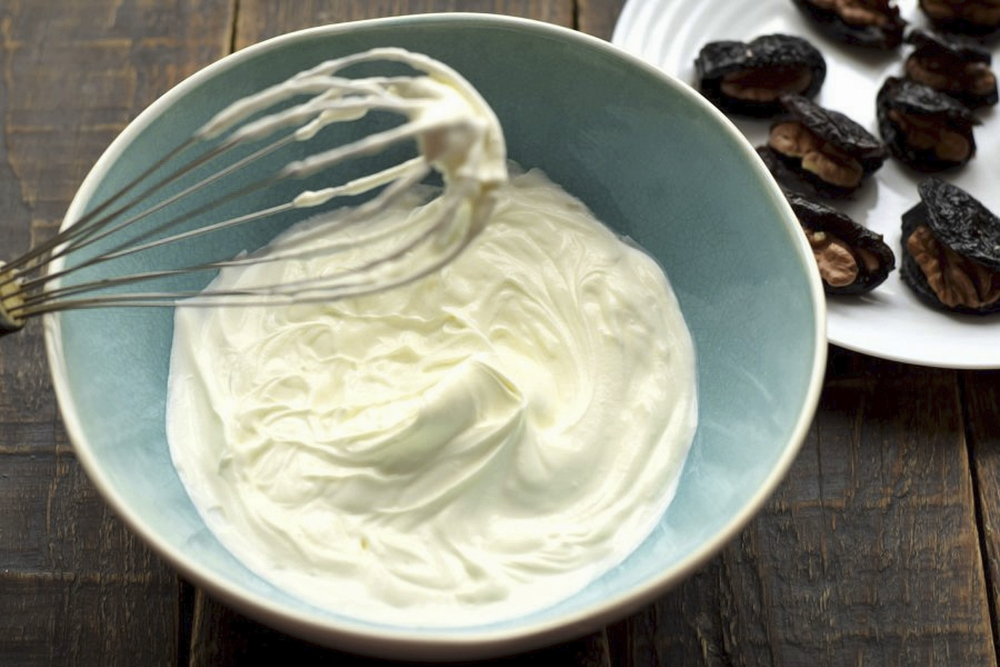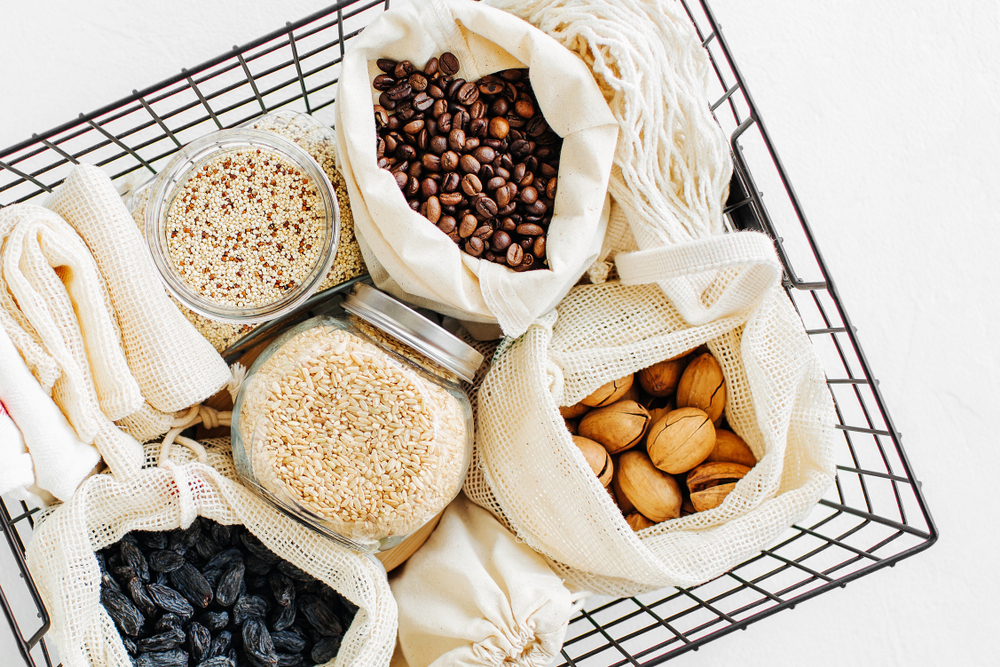So you bought a carton of heavy whipping cream, and now you’re wondering about the shelf life. You’ve probably seen it for sale in your local grocery store and wondered, “How long does heavy cream last?” or “Does it go bad?”
Heavy whipping cream is a type of emulsion that’s easy to make at home. It’s also incredibly versatile as an ingredient—you can use it in recipes like eggnog, milkshakes, and desserts like mousse or cheesecake.
But if you don’t know how long this creamy substance lasts before it goes bad, then all of your delicious cooking projects will be ruined! Let’s answer those burning questions about how long does heavy whipping cream last? Is there mold hiding somewhere inside? And what are some ways to prolong its shelf life?
Even after you open it, heavy cream can last in your fridge for about a month!
How Long is Heavy Whipping Cream Good For?
Heavy whipping cream can be stored in the refrigerator for up to 2 months (it’s a stretch but possible). Once opened, you still have a month of shelf life in your refrigerator. The USDA states that heavy cream, whether opened or not, has a refrigerated shelf life of up to a month.
When storing your heavy whipping cream, make sure you don’t put it on the door of your fridge where temperature fluctuations are more common. It’s best if you store this product in its original container with an airtight lid and keep it away from any warm areas (like near an oven).
The shelf life of heavy whipping cream depends on how well you store it: If properly refrigerated at 40 degrees Fahrenheit or below at all times during its storage period, then this product should last up until its expiration date on the package; however, if left unrefrigerated for long periods of time or stored outside of its original packaging then this will decrease its shelf life considerably.
It’s the high-fat content that preserves your heavy cream after it’s opened. It goes further if you’ve bought it from the grocery store because it’s been Ultra-High Temperature (UHT) processed. This pasteurization process makes it far more stable.
This isn’t necessarily the case in your local dairy or farming community. It’s the UHT that adds the extra shelf time. The high-heat pasteurization process kills any present bacteria and spores before the cream is packaged and sent to the store.
If you’d like to extend the life of your heavy cream even further, it freezes well. Heavy cream can withstand those freezing temps in your freezer for up to three months! To make it even easier for when you want to pull it out and use it again. You can pop out and thaw only what you need at the time.

How Does Heavy Cream Go Bad?
Heavy cream is a dairy product that can go bad if it’s not stored properly. The exact time frame depends on how you’re storing your heavy cream, but as a general rule of thumb, it’s best to use or freeze your heavy cream within one month of purchasing it.
The nature of dairy products means they were exposed to spores and bacteria quite often before they made it to the store. These are all picked up from the animal’s udder or the environment in which the animals live.
There are rules and regulations about how the dairy products have to be treated before they come to the store, it’s not foolproof.
Pasteurization helps a lot in this case. The quick blast of high heat in the case of UHT will kill most of the bacteria and spores that cause your cream to spoil, but not all. It’s the bacteria that will make the milk or cream go bad.
Sour or curdled cream will not suit your recipes at all! It’s not necessarily going to make you sick, but the growing bacteria should be a concern.
Once your cream starts to spoil, the few bacteria that were left after the pasteurization process are multiplying and they will eventually grow to a point where they will make you sick.
Dairy products can contain: Listeria monocytogenes, E. coli, Campylobacter jejuni, Yersinia enterocolitica, Salmonella, and Brucella.
For longer-term storage options such as freezing or canning jars filled with homemade whipped toppings like buttercream frosting recipes made from heavy whipping cream instead!
What are the Signs That Your Heavy Whipping Cream Has Gone Bad?
Now, you’ve had a container of heavy cream in the fridge and want to make some whipped cream for your pancakes. It’s been a couple weeks, how do you tell if your cream is still good?
The thing with shelf lives is they’re average. It all depends on what the dairy product was exposed to during packaging and how it was handled afterward by the distributor, the grocer, and you.
On top of that, the fresher it is the better it performs. While it can last a month in your fridge, the closer it is to that deadline, the less quality you’ll get when you use it. That influences it more for whipping purposes than anything else.

The date on the package
The date on the package is usually a ‘use by’ or ‘best by’ date and this has to do with the best quality period rather than an expiration date. It’s a good baseline though. It’s around this date that you should start to use caution and check your cream regularly before throwing it in your current recipe.
How to tell if it’s bad
There are four tell-tale signs that it’s time to dump that cream down the kitchen drain. If it still looks, smells, and tastes like heavy cream then you’re in the clear. Start questioning it if any of these signs show up:
- Texture Change. If your cream has separated or has a weird texture, it’s time to let it go. This usually appears as water with grainy looking dairy fats floating around. It can also present as a change in consistency. A cream that used to be quite thick is now runny or vice versa.
- Sour Smell. Your heavy cream should not smell sour. It’s not sour cream. If it smells sour rather than sweet, it’s time to dump it.
- Mold. One of the easiest indicators is that it started to grow colored mold. That’s an easy sign to read. This isn’t blue cheese.
- Bad Taste. The last sign you’ll want to check is the taste. If you’ve checked off all of the above take a little taste and make sure it tastes right. Your cream should taste light with a hint of sweetness. If that’s not the case, dump it.
How to Prolong Heavy Cream’s Shelf Life
One of the best ways to prolong the shelf life of your heavy cream is by storing it in the fridge.
In addition to keeping your heavy cream refrigerated and covered when not in use and before opening (to prevent spoilage), there are other things you can do to ensure that its shelf life lasts as long as possible:
- Only buy what you need; don’t buy more than necessary because this increases chances for spoilage since there will be extra packages sitting around collecting dust without being opened regularly enough for proper inspection before consuming them later on down the line.
- When shopping, always check the dates on the carton. You’ll want to buy one that has a date a month out. Don’t buy the older cartons. You may have to dig a little some time to find one, but it’s worth it in the end.
- Measure out what you need and immediately put the carton back in the fridge. The longer you leave it at room temperature, the more likely those pesky bacteria will start to multiply. The cooler temperatures in the fridge slow this process considerably.
- Store your cream in the back of the fridge. The closer they are stored to the door, the more they’re exposed to temperature fluctuations. You want a nice steady, cold temperature.
- Don’t keep your fridge temp above 40 degrees F (5 degrees C)
- Keep the container tightly sealed. You don’t have to move it into an airtight container, this actually may expose it to more bacteria. If your carton doesn’t have the resealable pour spout, then tape the opening closed when not in use.
- Use your leftovers as soon as you can. The closer to the date you get, the less quality you have in that carton.

What Can You Use Leftover Heavy Cream With?
Heavy cream is a versatile ingredient that can be used in a variety of ways. It’s especially useful in baking and desserts, but it also makes an appearance in coffee, smoothies, and cocktails. Heavy cream can even be used as a sauce base for pasta dishes or other savory dishes!
Here are some ideas on how to use leftover heavy cream:
- Make a batch of cookies with your leftover cream!
- Whip up some frosting for cakes or cupcakes (or just eat it straight from the bowl).
- Add some cream and fresh berries to your next batch of pancakes or waffles–the sweetness will complement them perfectly!
- Homemade ice cream is always a tasty choice, or whip up some cream for sundaes.
- Thick sauces and soups like pasta with gorgonzola cream sauce or a seafood bisque.
- Freeze some in ice cube trays to toss into your favorite iced coffee drinks
Related post: How Long Does Cool Whip Last
FAQs
Can you freeze heavy cream?
Absolutely! This can affect what you do with it when you thaw it though. Some creams do not whip properly after thawing. Whipping should be done with fresh cream, but other recipes are perfectly suited to thawed cream.
Is it safe to eat cream that has gone sour?
You are at risk for food poisoning if you eat soured cream. This depends on your body’s sensitivity and the severity of how much your cream has gone bad. Early stages probably won’t hurt you, but higher bacteria blooms can cause stomach aches, nausea, diarrhea, and sometimes a fever.
What can I do with heavy cream that has soured?
You can still use it in some cooking and baking. The heat involved in these two types of recipes will kill off the bacteria. The texture and flavor will not be suited to other recipes, especially sauces, not to mention the dangers of food poisoning.
Conclusion
Especially that ultra-pasteurized cream you’ll find in your local grocery store will last up to a month.
Watch the dates and use your heavy cream as quickly as possible after you open it. As you approach the dates on the carton, make sure to go through the 4-point checklist above and make sure your heavy cream is still good!







